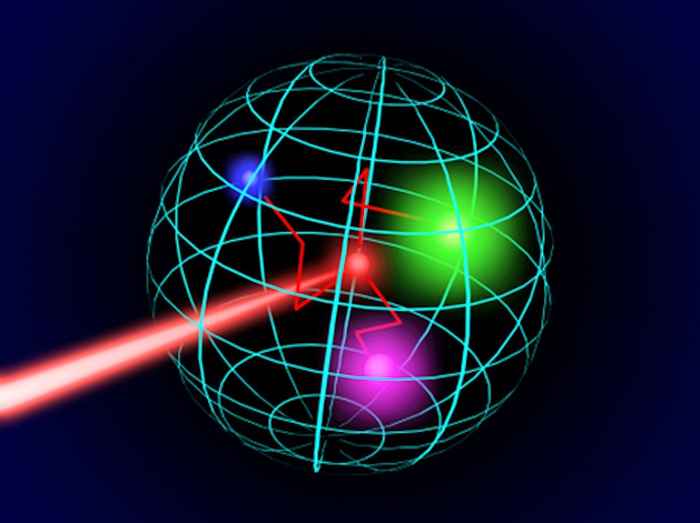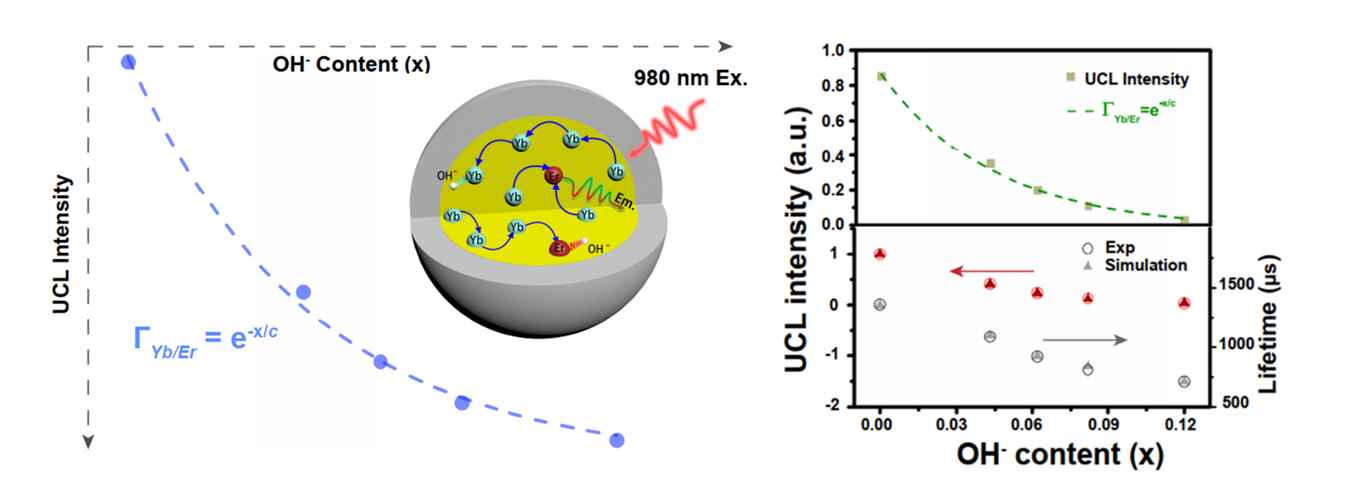Quantitatively understanding defects in phosphors from a nano perspective
21 May 2021

Phosphors are substances capable of luminescence, emitting light upon exposure to electromagnetic radiation. They can be found in applications as diverse as cathode-ray tubes, LED lighting, and luminous paints. Particularly appealing is their use as upconversion materials where they emit one photon upon absorption of several photons of lower energy. This 'jacking' of light from lower to higher frequencies can be used for instance to shift the near-infrared (NIR) light of an economic continuous-wave milliwatt laser towards higher, visible frequencies and even into the ultraviolet (UV) spectral region. Potential applications of upconversion are in super-resolution spectroscopy, high-density data storage, anti-counterfeiting, and biological imaging and photo-induced therapy.
The optical properties of upconversion phosphors are highly dependent on the occurrence of defects and impurities, which often have serious adverse effect on energy transfer and conversion. Unravelling the underlying interaction mechanisms, however, is quite a challenge since it is nearly impossible to adequately quantify the occurrence of defects and impurities. In their paper in 'Light: Science and Applications', Hong Zhang and co-workers now show that this dilemma can be effectively disentangled by applying nanostructures.
The relevance of hydroxyl impurities
The researchers studied nanometre-sized particles consisting of sodium yttrium fluorides doped with lanthanide ions. These are one of the most effective luminescence upconversion materials, but their performance suffers from the occurrence of hydroxyl (OH-) impurities. These are easily brought in during materials synthesis and can reduce the nonlinear upconversion performance up to three orders of magnitudes. The hydroxyl impurities occur both on the surface and inside the nanoparticle.
The role of surface relevant OH- on luminescence properties has by now been well documented via approaches like shell coating. Unravelling the interaction mechanism of internal OH- impurities, however, has hardly been reported mainly because quantifying their content is very cumbersome. Hong Zhang and his co-workers have now been able to successfully separate the effects of the surface relevant OH- and the OH- inside the nanoparticle on the photon upconversion dynamics.

Using Fourier-transform infrared spectroscopy (FTIR) they determined the content of internal OH- with a relative error of less than 15%. On this basis, combined with theoretical modelling, they were able to bridge microscopic ion-ion and ion-impurity interactions to macroscopic upconversion luminescence phenomena. This led, among others, to a mechanistic explanation of the phenomenon observed in related studies that the upconversion luminescence intensity exhibits an exponential decay law with the increase of OH- content (see figure above).
Effective synthesis of upconversion materials
Since it was known that synthesis in a strictly dry environment can substantially increase the upconversion luminescence efficiency, Zhang and co-workers set out to adjust the internal OH- impurity contents of the nanoparticles through selective drying of different synthesis steps. They thus were able to tune the luminescence intensity within a range where the maximum intensity was 30 times larger than the minimum efficiency. More importantly, by introducing an FTIR test method, they found that the absorption peak intensity at ~3400 cm-1 measured in a heavy water environment can be reliably used to quantitatively characterize the OH- impurity contained in the nanoparticle.
Thus, with the capability of quantitatively adjustment of the internal OH- and NaYF4 core/shell nanostructures, the researchers have explored the microscopic dynamics of photon upconversion under the action of internal OH- impurities from both an experimental and theoretical perspective. The prediction from model simulations that both the luminescence lifetime of the sensitizer Yb3+ and the upconversion emission intensity decrease exponentially with the content of OH- is well confirmed experimentally, and the relevant interaction parameters are determined.
This work was performed in collaboration with the State Key Laboratory of Luminescence at the Changchun Institute of Optics, Fine Mechanics and Physics of the Chinese Academy of Sciences, and Anhui Normal University.
Paper
Yansong Feng, Zhi Li, Qiqing Li, Jun Yuan, Langping Tu, Lixin Ning, Hong Zhang: Internal OH- Induced Cascade Quenching of Upconversion Luminescence in NaYF4:Yb/Er Nanocrystals. Light: Science & Applications 10 (2021) 150). DOI: 10.1038/s41377-021-00550-5